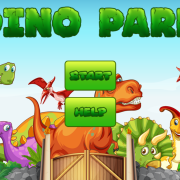Solar System | Game Online
Exploring the Wonders of Our Solar System: A Cosmic Journey Through Time and Space
Welcome, space enthusiasts! The cosmos holds an endless array of mysteries and secrets, with our very own solar system being one of the most fascinating subjects for exploration. This article takes you on a journey through the celestial bodies that constitute our solar system, unveiling their unique traits and answering intriguing questions about their origins and evolution.
A Brief Overview: The Solar System
The solar system is a collection of celestial objects bound together by gravity and revolving around the Sun. It includes eight planets, three dwarf planets, hundreds of asteroids, countless comets, and the Kuiper Belt and Oort Cloud – vast regions filled with icy bodies on the outskirts of our system.
The Inner Planets: Mercury, Venus, Earth, and Mars
Let's start with the inner planets, starting from the Sun itself. The closest planet to our star is Mercury, a small, rocky world with cratered terrain resembling our Moon. Venus, the second planet, is often called Earth's "twin" due to its similar size and composition; however, it has a thick atmosphere composed primarily of carbon dioxide and an inhospitable surface temperature that can reach upwards of 864°F (462°C).
Next comes Earth – the only planet known to support life. With diverse ecosystems and a breathable atmosphere rich in oxygen, our planet has developed a unique biosphere that sustains a myriad of organisms, from microscopic bacteria to massive blue whales. The fourth inner planet is Mars, also known as the Red Planet due to its reddish appearance caused by iron oxide (rust) on its surface. Mars boasts intriguing features like Olympus Mons – the largest volcano in the solar system – and Valles Marineris, a vast canyon system that spans over 2,500 miles (4,000 km).
The Outer Planets: Jupiter, Saturn, Uranus, and Neptune
Beyond Mars lie the outer planets, each with distinctive characteristics. Jupiter is the largest planet in our solar system, characterized by its swirling bands of clouds made primarily of ammonia and water. This gas giant is also home to the Great Red Spot – a massive storm that has been raging for over 300 years.
Saturn is famous for its stunning ring system, which consists of countless particles made up of ice and rock. The planet itself is composed primarily of hydrogen and helium, with a prominent, hexagonal-shaped cyclone at its north pole. Uranus and Neptune are similarly gas giants, though they possess unique traits such as extreme tilted axes and powerful storms that make them stand out among their peers.
Dwarf Planets: Pluto and Eris
Once considered the ninth planet in our solar system, Pluto was reclassified as a dwarf planet in 2006 due to its small size and lack of dominance over its orbital path. With five known moons and an icy surface, Pluto continues to intrigue scientists with its complex geology and potential subsurface oceans.
Another dwarf planet is Eris, discovered in 2005. Eris is slightly larger than Pluto and possesses a moon named Dysnomia. Its remote location and cold temperatures make it difficult to study, but scientists hope that future missions will shed light on this mysterious celestial body.
Asteroids, Comets, and Beyond
Asteroids are rocky bodies found primarily in the asteroid belt between Mars and Jupiter. Some asteroids are relatively small, while others rival the size of mountains on Earth. Comets are icy celestial objects with a nuclear region, coma, and tail that form when they approach the Sun. Both asteroids and comets hold clues about the early stages of our solar system's formation.
Beyond the Kuiper Belt lies the Oort Cloud, a vast region containing billions of icy bodies that likely orbit the Sun in large ellipses. The Oort Cloud may be the source of long-period comets that enter the inner solar system and become visible from Earth.
The Future of Solar System Exploration
Scientists continue to unravel the secrets of our solar system with advanced technology and innovative space missions. From Mars rovers exploring the Martian surface to New Horizons studying Pluto and beyond, exploration has only just begun. As we learn more about our celestial neighbors, we gain a deeper understanding of our place in the universe – and the endless possibilities that await us among the stars.
The solar system is a captivating subject for anyone interested in space and astronomy. With its diverse planets, dwarf planets, asteroids, comets, and distant regions like the Kuiper Belt and Oort Cloud, there's always something new to discover. So, whether you're an experienced astronomer or a curious beginner, we invite you to join us on this cosmic journey through our very own solar system.
Note: This article is intended for informational purposes only and serves as a general overview of the solar system. For more in-depth information about specific celestial bodies, please consult reputable scientific resources or academic institutions.










